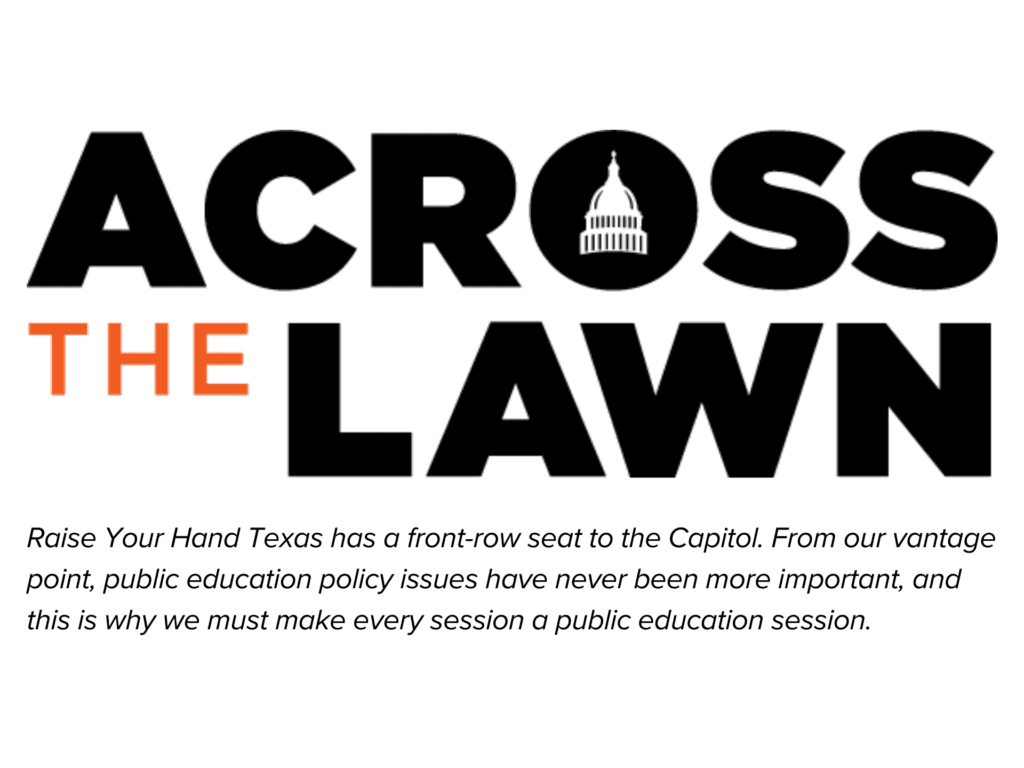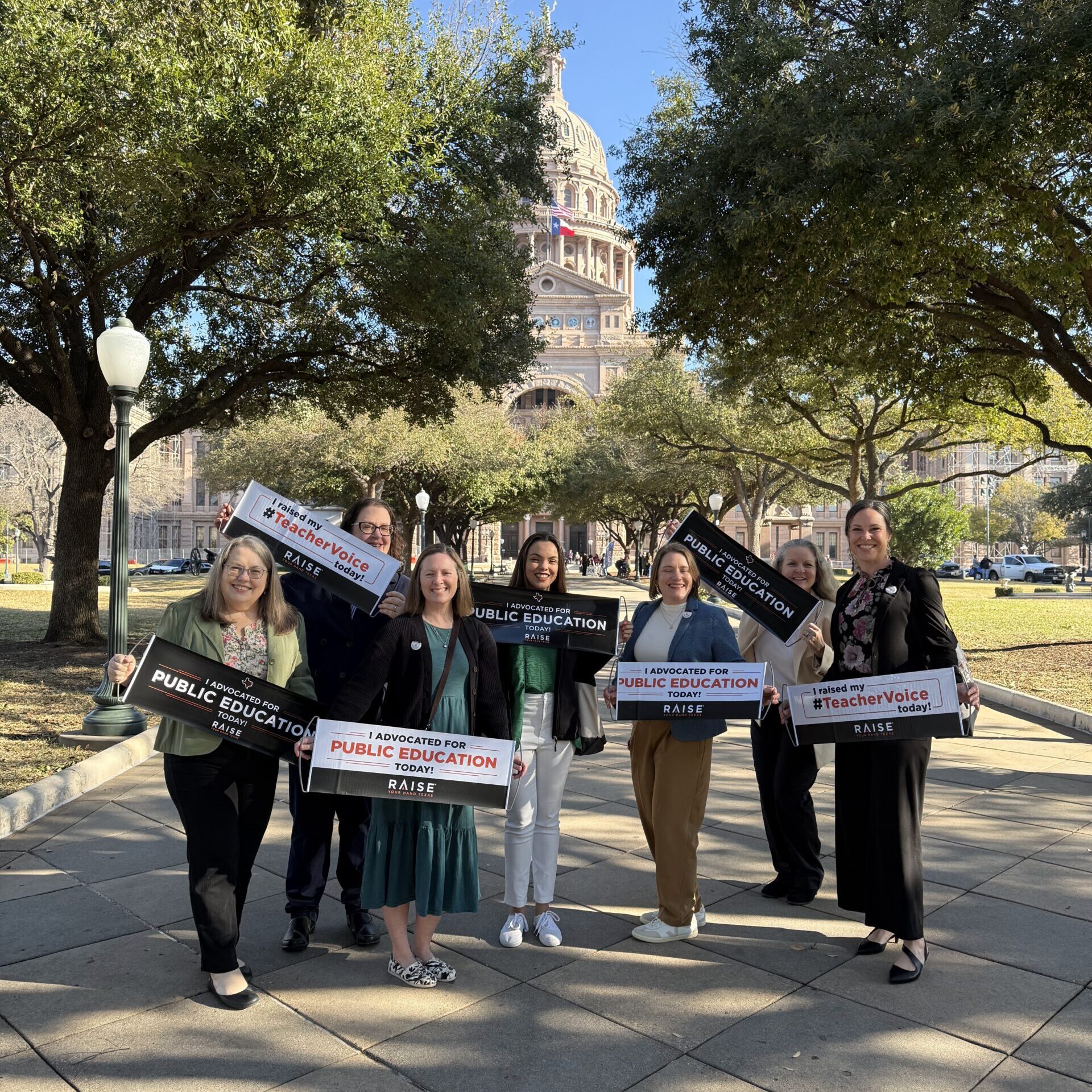
categories
Across the Lawn – April 11, 2025

April 11, 2025

One Thing to Do: Gain Your Access to The Newest Podcast
We just dropped a new episode of Intersect Ed about an often misunderstood topic: funding special education in Texas public schools. This episode will explore why it costs so much to do it right and the $2 Billion dollar gap that Texas school districts are covering after they allocate the funds received from the state and federal government to ensure special education students receive the services they need.
Take a listen as our Intersect Ed host Morgan Smith is joined by Steven Aleman, Senior Policy Specialist at Disability Rights Texas; Amanda Fuentes, Special Education Team Lead at Cibolo Valley Elementary School in Schertz-Cibolo-Universal City Independent School District; and, Paige Meloni, Superintendent at Schertz-Cibolo-Universal City Independent School District.
Four Things to Know:
1. TEA to Release 2023 A-F School Accountability Ratings
The Texas Education Agency (TEA) will release 2023 ratings on April 24, following a state appeals court ruling that upheld Commissioner Mike Morath’s authority to implement changes and release delayed scores. The COVID-19 pandemic paused ratings in 2020 and 2021, and in 2022, schools that would have received ratings below a C were labeled “Not Rated.”
In 2023, the TEA introduced new college and career readiness standards. Over 120 school districts sued the TEA, arguing the changes were unfairly introduced without enough notice. A second lawsuit challenges the reliability of STAAR results after a major overhaul to the test and the introduction of automated scoring. SB 1962 by Sen. Bettencourt, as passed by the Senate Committee on Education K-16 this session, would allow the TEA to appoint conservators and restrict funding for districts that sue over accountability ratings.
2. House Passes State Budget Early Friday Morning
After a long day and night of debate ending at 3:00 a.m. on Friday, April 11, the House passed its version of the state budget for the 2026-27 state budget with a 7.7% increase in general revenue spending compared to the last two-year budget. The Legislature came in with a $23.8 billion balance.
The budget includes $51 billion for ongoing property tax relief including the $3.5 billion in new relief proposed this session, an additional $7.6 billion for public school funding formulas, $1 billion for a new Education Savings Account program, a $400 million increase in school safety funding, and $500 million for new math and literacy programs and academies.
House members filed nearly 400 budget amendments to the bill prior to debate, including several to redirect funds from the $1 billion school voucher program toward teacher pay and or retired teachers. In a procedural move, more than 100 of those amendments were essentially withdrawn, including those on vouchers, and were never debated.
The state budget will now go to a conference committee where five members from the Senate and five members from the House will work on the final details.
3. Full House to Hear Bills on Career and Tech, Applied Science Pathways, and Student Discipline
Next Tuesday, April 15, the House will hear numerous bills which were deemed emergency items by Governor Abbott at the start of the 89th Legislative Session. One of the bills, HB 120, expands dual credit and creates a high school advising program.
HB 120 by Rep. Bell has a $571 million price tag attached to it for the next biennium and includes the following provisions:
- Dual Credit Expansion for P-TECH/R-PEP Graduates:
- Allows recent high school graduates enrolled in P-TECH or R-PEP programs to take dual credit courses at no cost under the FAST program.
- JROTC as CTE:
- Includes JROTC courses as Career and Technology Education (CTE), making them eligible for CTE funding through the Foundation School Program.
- CTE Exam Subsidies:
- Increases the number of CTE exam subsidies per student from one to two.
- Expands teacher certification exam subsidies to include other CTE areas.
- Military Pathway Grant Program:
- Funds creation of JROTC programs, ASVAB administration, and career counseling.
- Provides $50,000 grants per district.
- Caps annual funding at $2 million statewide.
- High School Advising Program:
- Administered by TEA to support college and career advising.
- Requires partnerships with higher ed or vocational institutions.
- Prioritizes juniors and seniors.
- Provides $30,000 per full-time advisor.
- Limit: one advisor per 200 students in grades 9–12.
- Funding reduced by 20% annually starting in year 5 unless performance benchmarks are met.
4. School Funding to be Discussed on House Floor in Coming Days
The full Texas House is expected to debate HB 2, the major school funding bill, on the floor in the coming days. The bill adds $7.7 billion in public education funding over the biennium through a variety of provisions. These include increasing the basic allotment, shifting to a new intensity of service model for special education, and raising the small- and mid-sized district adjustment.
HB 2 spans 128 pages of funding changes that impact school districts differently. On average, it means about a $550 per-student increase for urban and suburban schools, a $2,700 increase for rural schools, and a $980 increase for charter schools. For districts that see less of a benefit, or even a potential loss due to the elimination of certain existing formulas, the bill sets a $200 per-student floor to help offset the impact.
Public schools entered this session needing about $20 billion for the biennium just to maintain the same purchasing power they had in 2019.



